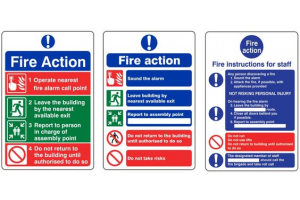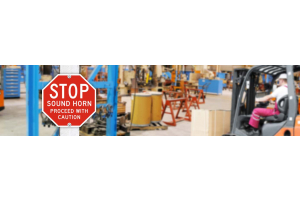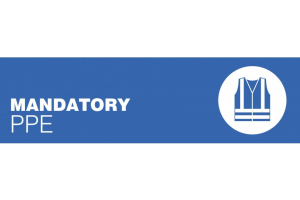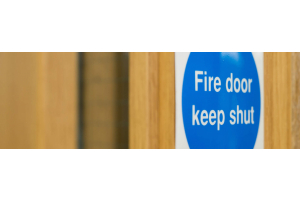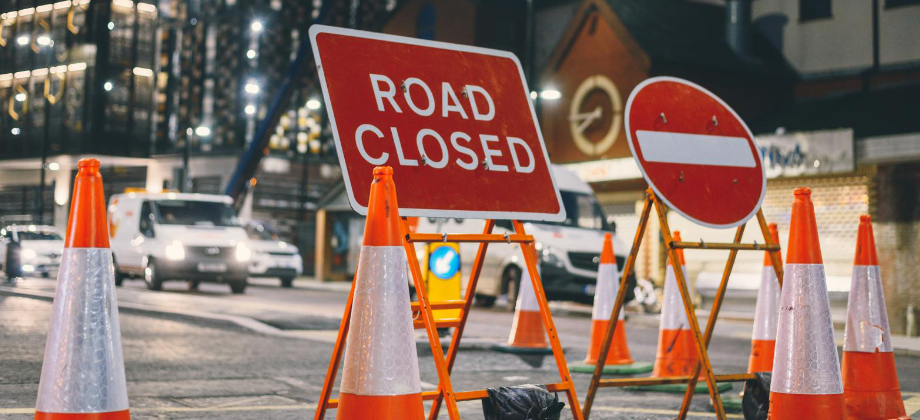
Groundwork
Almost all construction work involves some form of excavation (for foundations, drains, sewers etc) and every year people are killed or seriously injured while working in excavations. Many are killed or injured by collapses and falling materials, others are killed or injured when they contact underground or overhead services. Designers and those specifying work should always consider the use of trench less techniques, such as micro-tunnelling, directional drilling, impact moiling and pipe bursting etc, which replace the need for excavation, apart from the launch and reception pits. They also reduce risks to members of the public from open excavations and subsequent traffic disruption. It is crucial to survey any obstructions and control the machine cutting head to avoid them. Service location plans and location devices should be used to ensure that that route of the bored service does not impinge on existing services. However, if excavations are required, the work must be properly planned and carried out to prevent accidents. There is almost no ground that can be relied upon to stand unsupported in all circumstances and the risk is self-evident when you consider that it is quite common for one cubic metre of soil to collapse into an unsupported excavation, and this can weigh as much as one tonne.
Before digging any trenches, pits, tunnels, or other excavations, decide what temporary support will be required and plan the precautions that are going to be taken against:
- collapse of the sides;
- people and vehicles falling into the excavation;
- materials falling onto people working in the excavation;
- undermining nearby structures;
- underground gas services and overhead electricity services; and
- the inflow of ground and surface water
Collapse of the sides or roof
The need for adequate support will depend on the type of excavation, the nature of the ground and the ground water conditions. Prevent the sides from collapsing by supporting them with sheeting or proprietary support systems. Take similar precautions to prevent the face from collapsing. Install support without delay as the excavation progresses. Never work ahead of the support or remove it prematurely. The work should be directed by a competent supervisor. Give the workers clear instructions. Any unsupported excavation will be safe without support ONLY if its sides are battered back sufficiently, or if the excavation is in sound rock. Battering back the sides of an excavation to a safe angle is a simple and acceptable means of preventing instability. In granular soils the angle of slope should be less than the natural angle of repose of the material being excavated. In wet ground a considerably flatter slope will be required.
A competent person who fully understands the dangers and necessary precautions should inspect the excavation at the start of each shift. Excavations should also be inspected after any event that may have affected their strength or stability, or after a fall of rock or earth. Prevent people from falling by guarding excavations. Edges of excavations should be protected with substantial barriers where people are liable to fall into them. This can be achieved using guard rails and toe boards, which can be inserted into the ground immediately next to the supported excavation side, or using fabricated guard rail assemblies that connect onto the sides of the trench box. Alternatively, make use of the support system itself, eg using trench box extensions or trench sheets longer than the trench depth, All excavations in public places should be suitably fenced off to prevent members of the public approaching them.
Prevent vehicles from falling into excavations by keeping them out of the area. Vehicles passing close to the edges of excavations may also overload the sides, leading to collapse. Where necessary, use baulks or barriers to keep vehicles away from excavated edges. Baulks and barriers are best painted or marked to make sure they can be seen by drivers. Where vehicles have to tip materials into excavations, prevent them from overrunning into the excavation by using properly secured stop-blocks. These must be placed at a sufficient distance from the edge of the excavation to avoid the danger of the edge breaking away under the weight of the vehicle. The sides of the excavation may also require extra support.
Do not park plant and vehicles or store excavated spoil and other materials close to the sides of excavations. The extra loading's from spoil, vehicles etc can make the sides of excavations more likely to collapse. Loose materials may fall from spoil heaps into the excavation. Edge protection should include toe-boards or other means, such as projecting trench sheets or box sides to protect against falling materials. Head protection should be worn. Make sure excavations do not undermine the scaffold footings, buried services or the foundations of nearby buildings or walls. Many garden or boundary walls have very shallow foundations which are easily undermined by even small trenches, causing the wall to collapse onto those working in the trench. Before digging starts, decide if extra support for the structure is needed. Surveys of the foundations and the advice of a structural engineer may be required.
Many serious accidents have occurred when buried services have been damaged during excavation work. In particular, contact with any electricity cables can result in explosion and burns to those in the vicinity. Escaping gas which ignites can cause serious injury and/or property damage as a result of fire and explosion. Excavation work should not start until steps have been taken to identify and prevent any risk of injury arising from underground services. Burns and electrocution can result if raised tipper truck bodies or excavators touch or come close enough to overhead power lines to cause arcing. There is a risk to all those close to the item of plant which becomes live, as well as to the operator.
The need to undertake excavation work close to or below such lines should be very carefully considered and avoided where possible. Depending on the permeability of the ground, water may flow into any excavation below the natural groundwater level. The supports to the side of the excavation should be designed to control the entry of groundwater and the design should take any additional water loading into account. Particular attention should be given to areas close to lakes, rivers and the sea. Water entering the excavation needs to be channelled to sumps from where it can be pumped out; however, the effect of pumping from sumps on the stability of the excavation should be considered. Alternative techniques for de-watering (such as ground freezing and grout injection) could also be used. Designers will need to consider these issues.
Provide a safe means of getting into and out of an excavation. If a risk assessment identifies that ladders are a reasonable means of access and egress from an excavation, they must be suitable and of sufficient strength for the purpose. They must be on a firm level base, secured to prevent slipping and, unless a suitable alternative handhold is provided, extend to a height of at least 1 m above the landing place. Consider hazardous fumes – do not use petrol or diesel engines in excavations without making arrangements for the fumes to be ducted safely away, or providing for forced ventilation. Do not site petrol or diesel-engined equipment (such as generators or compressors) in or near the edge of an excavation; exhaust gases can collect and accumulate. For information about fumes in confined spaces, including excavations.
Excavations that need to be supported or battered back to prevent danger must be inspected and ensure signage is in position the warn others of the deep excavations. The person in control of the excavation must arrange for a competent person to carry out these inspections: at the start of the shift before work begins; after any event likely to have affected its stability; and after any accidental fall of rock, earth or other material. If the competent person is not satisfied that work can be carried out safely, they should advise the person the inspection was carried out for as soon as possible and the excavation should not be used until the defects have been put right. A written report should be made following most inspections. The competent person must: complete the inspection report before the end of the working period; and within 24 hours, provide a copy of the report to the person for whom the inspection was carried out. The person receiving the report must: keep it at the site where the inspection was carried out until construction work is completed; and thereafter, keep it at an office for three months.
For an excavation, only one written report is required within any seven-day period, unless there has been a collapse/fall of material or other event likely to affect stability. In this case an inspection and report are required before work starts again. The report should contain the following information: name and address of the person the inspection was carried out for; location of the place of work or work equipment inspected; description of the place of work or work equipment inspected; date and time of the inspection; details of any matter identified that could give rise to a risk to the health or safety of any person; details of any action taken as a result of any matter identified in the point above; details of any further action considered necessary; and name and position of the person making the report.
Underground services
Many serious accidents have occurred when buried services have been damaged during excavation work. If the proper precautions are not taken, it is all too easy for workers to hit these services, resulting in risks to themselves and others in the vicinity. In addition, the interruption of services can create serious problems for consumers, especially those critically dependent upon them, eg a hospital. The most obvious examples of buried services are those used to carry electricity, gas, water and telecommunications. A significant risk of injury results from accidental contact with electricity cables. Buried electrical cables often carry high voltages and accidental contact has resulted in deaths and major burns. Most injuries are caused to people using pneumatic drills and involve 415-volt cables within 0.5 m of the surface. When a gas pipe is damaged, escaping gas that ignites can cause serious injury and/or property damage as a result of fire and explosion. Serious accidents have arisen where gas from damaged pipes has tracked back underground into buildings where it has subsequently ignited.
The consequences of damaging water pipes and telephone cables may be less immediately evident, but are nonetheless serious, both in terms of disruption and cost. Fibre optic telecommunication cables are very expensive and a simple break may mean a costly repair. Before work starts, check with all public and private utilities (such as electricity, gas, water, telecommunication and cable TV companies) and the landowner for the existence of services, and obtain service plans. Service plans should not be considered as completely accurate and serve only to indicate the likely presence of services. Use them as a guide to see whether the place intended for digging may involve working near buried underground services. Look out for signs of services such as manholes, valve covers, street lights etc.
It is essential that service-locating devices (also known as CATs, which stands for cable avoidance tools) are used by properly trained people to identify, as far as possible, the actual location of the underground services. When looking at service plans, remember that reference points and services may have been moved and that not all service connections or private services are shown. The line of any identified services should be recorded and the route marked with paint on paved surfaces (use biodegradable paint or erase residual markings as soon as possible after excavation) or with wooden pegs in grassed or un-surfaced areas. Do not use steel spikes which can damage services laid at a shallow depth. Once the approximate location of a service has been identified, trial holes should be dug carefully by hand to establish the exact location and depth of the service. Where two holes are dug at intervals, it should not be assumed that the service runs in a straight line between them.
Hand tools can be a common source of accidents if used incorrectly. However, when used carefully, they can normally provide a satisfactory way of exposing buried services, once the approximate positions have been determined. Every effort should be made to excavate alongside the service rather than directly above it. Final exposure of the service by horizontal digging is recommended as the force applied to hand tools can be controlled more effectively. Mechanical excavators and power tools should not be used within 0.5 m of the indicated line of a service. Power tools may be used to break paved surfaces but great care must be taken to avoid over-penetration, as a service may have been laid at an unusually shallow depth. Power tools must never be used directly over the indicated line of a cable unless it has been made dead.
Before digging, make sure that: all workers involved in the digging know about safe digging practice and emergency procedures and that they are properly supervised; the locator, guided by the service plans, is used to trace as accurately as possible the actual line of any pipe or cable or to confirm that there are no pipes or cables in the way, and the ground has been marked accordingly; there is an emergency plan to deal with damage to cables or pipes. Have a system for notifying the service owner in all circumstances. In the case of gas pipe damage, ban smoking and naked flames. Carry out evacuation whenever necessary (this may include people in nearby properties likely to be affected by leaks). Erect suitable signs to warn everyone of the danger.
Excavate using safe digging practices: keep a careful watch for evidence of pipes or cables during digging and repeat checks with the locator. If unidentified services are found, stop work until further checks can be made to confirm it is safe to proceed; hand dig trial holes to confirm the position of the pipes or cables. This is particularly important in the case of plastic pipes, which cannot be detected by normal locating equipment; hand dig near buried pipes or cables or use air-powered excavation devices. Use spades and shovels rather than picks and forks, which are more likely to pierce cables; do not use handheld power tools within 0.5 m of the indicated position of an electricity cable; do not use an excavator to excavate within 0.5 m of a gas pipe; treat all pipes or cables as ‘live’ unless it is known otherwise. What looks like a rusty pipe may be conduit containing a live cable. Do not break or cut into any service until its identity is certain and it is known that it has been made safe; support services once they are exposed to prevent them from being damaged, and make sure that they are not used as hand or footholds when people are getting in and out of the trench; report any suspected damage to services; back-fill around pipes or cables with fine material. Back-fill which is properly compacted, particularly under cast or rigid pipes, prevents settlement which could cause damage at a later date; once new services have been laid, update the plans.
